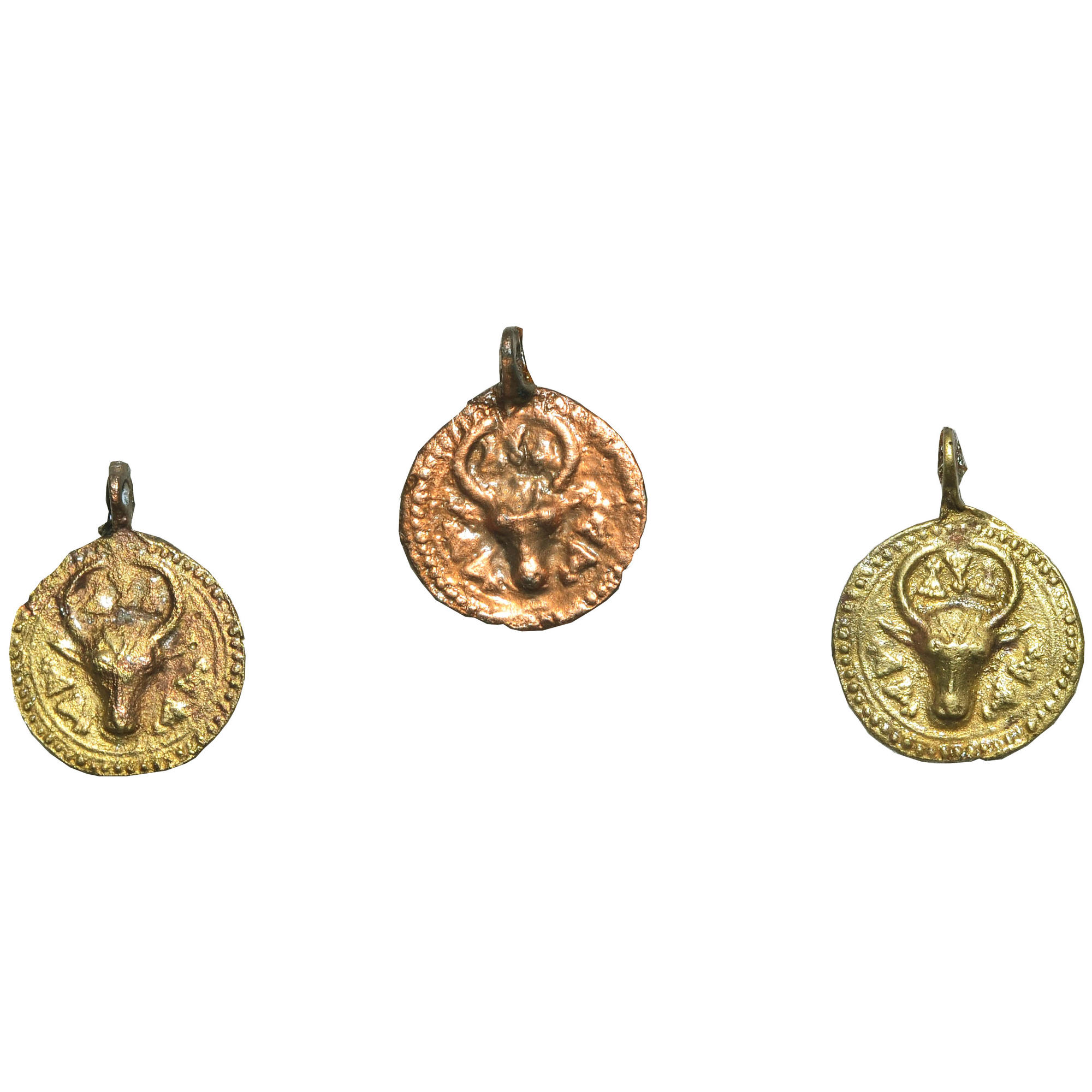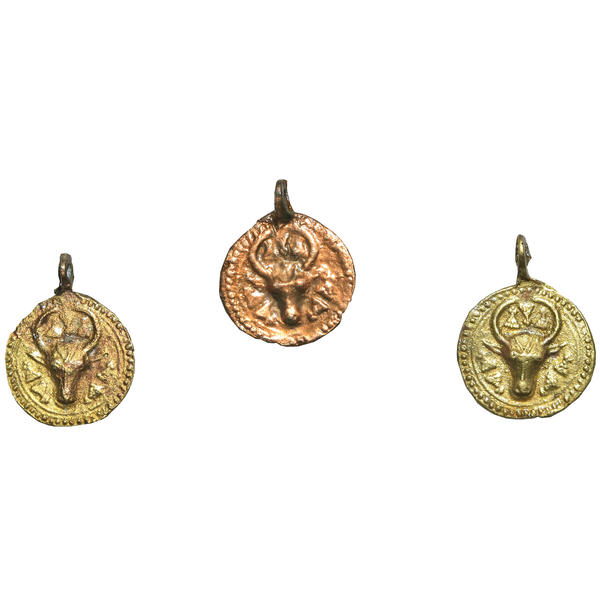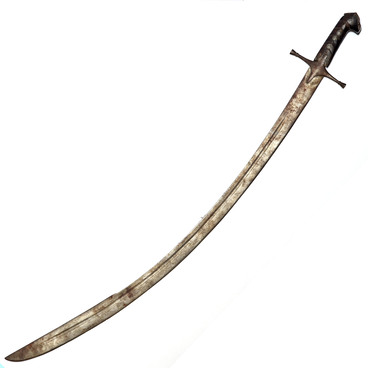Archaeologists have found these round pendants depicting a bull’s head in the barrows of the Radimichs tribe. Such decorations served as additions to necklaces or temple rings; both men and women could wear them.
Pendants with an image of a bull head
Creation period
XI – XII century
Dimensions
Diameter 2.3 cm
Technique
Brass, casting, minting
Collection
Exhibition
0
Open in app#1
Pendants with an image of a bull head
#2
#3
The early Slavs revered the bull or aurochs as the embodiment of Perun - the presiding deity, the god of thunder and lightning. The bull also symbolised courage, virility, and fertility. Its horns were considered strong amulets from enemies, diseases, and poisons, which is why they were used to produce drinking vessels, knife handles, and bows. Women believed that amulets with the image of a bull’s head helped to give birth to healthy sons.
#4
Pendants were cast from brass – an alloy of copper and zinc – that was more durable than fine metal. In Rus, zinc was not mined: in those days it was bought from Scandinavian and Baltic tribes. The image was minted using special tools on finished pendants.
On such jewellery, the bull head occupies the entire centre of the circle. It is larger than the rest of the symbols. It was usually depicted with rather high level of detail: on each piece, the outlines of the bull neb, convex eyes, nostrils, and long horns are clearly visible. On the forehead there is a symbol in the shape of a double triangle, which is turned upside down.
#5
Along the edge, the pendants are decorated with faux granules - small half-spheres of brass wire. Historians have suggested that the number of balls corresponds to the number of weeks in a year.[2] A small loop on the top was meant for a metal ring or a cord to put through.
#6
Ancient craftsmen depicted seven female silhouettes around the bull head on the pendants. The figures are located randomly on the suspension field: some are alongside of the bull, others are between its horns, and one of the silhouettes is turned upside down.
Pendants with an image of a bull head
#7
The archaeologist Boris Rybakov suggested that such pendants schematically depicted the ancient rite of turitsa, which was common among the South Slavic and Belarusian tribes. A holiday in honour of the aurochs was held in winter (around mid-January according to the modern calendar). On that day, young men used to dress up as bulls and perform special rituals symbolising fertility and health.
#8
Bryansk State Regional Ethnography Museum
read morehide
00:00
00:00
1x
Pendants with an image of a bull head
Creation period
XI – XII century
Dimensions
Diameter 2.3 cm
Technique
Brass, casting, minting
Collection
Exhibition
0
Open in app
Share



